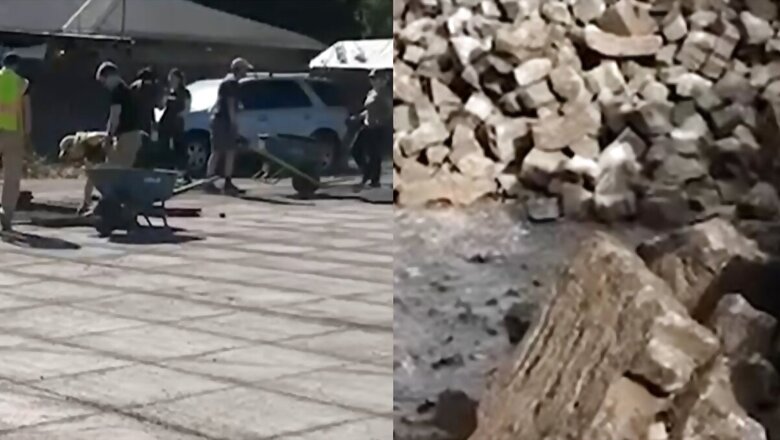
views
In a bid to revive nature and create more sustainable urban environments, cities across the globe are embracing depaving – the process of removing unnecessary concrete and asphalt surfaces to make way for green spaces. From the bustling streets of the United Kingdom to the serene landscapes of Belgium and France, depaving is gaining popularity as a simple yet effective solution to improve urban ecosystems. The process involves replacing concrete or asphalt surfaces with porous materials like grass, soil, or plants, allowing nature to reclaim these areas.
Depaving serves to improve urban settings by lowering stormwater runoff, improving soil health and establishing green spaces. It is normally a component of larger initiatives to create more sustainable and environmentally friendly metropolitan settings.
Recently, climate enthusiast Sam Bentley shared a video to his various social media accounts to educate people around the world about the depaving process. The video is gaining traction among users online.
“Should more places start doing this? Cities around the world are ripping up concrete and letting nature thrive instead! It’s called Depaving and it is gaining massive momentum as a solution to rising temperatures in urban environments," Sam Bentley wrote as caption on his post on LinkedIn.
Check the video here:
In the video, Sam Bentley discusses how people are tearing up concrete for a good reason. He goes on to explain the benefits of depaving. While concrete absorbs and radiates heat, making our cities extremely hot, plants may help to cool our streets, give shade, and create wildlife habitat. Soil and plants work like sponges, soaking up water and preventing flooding, he says. This method (depaving) can also help to regulate city temperatures and mitigate the effects of heat waves.
Towards the end of his informative video, Sam Bentley mentions that depaving projects are already underway in the United Kingdom, Belgium and France, where they are converting a 45,000 square meter parking lot into a green space.
According to the BBC, the depaving procedure has been in place since at least 2008, when the Depave group in Portland was established. Depaving, according to supporters, allows water to sink into the ground, reducing floods during heavy rains and contributing to the “sponginess" of cities. Meanwhile, native flora helps wildlife survive in urban areas, while planting trees adds shade, saving inhabitants from heat waves. Injecting vegetation into the streets may also beneft people’s psychological well-being.
As the climate crisis worsens, some towns and even entire regions are starting to use depaving as part of their climate adaptation plans.

















Comments
0 comment